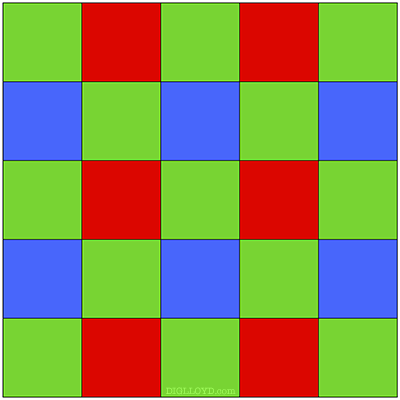Sony Alpha A7R III: Pixel Shift Facts
See my Sony wish list and get Sony A7R III at B&H Photo.
See my growing review of the Nikon D850 in Advanced DSLR.

I examined pixel shift and its limitations and benefits in great detail in my review of the Pentax K-1 where I showed that it is wonderful, but has strict limits on applicability.
In Sony Announces Sony Alpha A7R III, I briefly touched on pixel shift, the mechanism whereby each photosite gets sampled four times. Here is a summary of what can be expected, assuming Sony’s approach is no less good.
For an in-depth look at how the Pentax K-1 does its 4-frame true-color super resolution pixel shift mode in Pentax K-1 Super Resolution Pixel Shift Mode in diglloyd Advanced DSLR.
The good stuff
- Since each photosite gets 4X the exposure, noise is cut in half (√4 = 2)*. These two Pentax K-1 images are unbelievably good given the radical dynamic range and very deep black areas. Some minor motion was touched up.
* Dynamic range estimates found on the web show a fundamental ignorance of this fact. Such stuff is click bait fodder. - Moiré and color aliasing resulting from Bayer matrix demosaicing are banished, delivering a far more natural look with fine detail and especially with textural detail and especially with low contrast monochromatic textural detail.
- Resolution increases substantially but I see this as subjective more than objective; it depends on the subject matter, color, etc. I would rate a 42-megapixel sensor as being at least as good as a ~63 megapixel sensor. It’s not just an increase in detail, but a loss of spurious detail, elimination of aliasing, a gain in textural detail, etc. Subjectively, it is a huge step up, like skipping 3 generations of cameras.
The bad stuff
- All lens weaknesses are mercilessly revealed, since there is no demosaicing to hide small weaknesses.
- Perfect technical execution (focusing, aperture, exposure) are required to get full benefit.
- Any motion with pixel shift makes for supremely ugly artifacts. Software support is needed to retouch these areas with the image from a single conventional frame.
- Any change in lighting (passing cloud, changing sunset, etc) is equivalent to motion over the entire frame, resulting in checkerboarding. It can look exceptionally “digital ugly”.
- Outdoor use is fraught with issues; any wind is a serious problem for water or grass or leaves or anything that might move. Any change in lighting, etc.
Assuming excellent software support (a big assumption invalid to this day for the Pentax K-1), one could retouch affected areas, essentially painting-in one of the four conventional frame.
Focus stacking and pixel shift
Sony regrettably offers no focus stepping feature for generating frames for focus stacking, as does the new Nikon D850.
Stacking is of course possible, consisting of:
- Shoot pixel-shift images for the desired focus stacking sequence (same as for non-pixel-shifted images).
- Process the images to TIF.
- Import into your favorite stacking program, e.g., Zerene Stacker.
In other words, no difference except that each frame of the stack is a pixel-shift frame.
How pixel shift works
This is how it works for the Pentax K-1. Presumably it works the same way on the Sony A7R III, since it is the only way it can be done.
Shifting the sensor for true color — Pentax K-1

The K1 shifts the sensor so as to record independent R/G/B values at each pixel, an approach used in certain Hasselblad medium format cameras. This “pixel shift” approach requires 4 exposures in total, and thus can be problematic for moving subject matter: grass and leaves in wind, moving water, or anything moving at slower shutter speeds. But if the subject matter and camera are unmoving, it offers an ideal solution to the issues of a Bayer matrix sensor.
Two green samples at each location are acquired, which in theory should cut certain types of noise by √2 for the green channel (twice the exposure), assuming appropriate handling by the raw converter. But looked at more simply: 4 exposures means 4X the light gather means 1/2 the noise (√4).
The Pentax Super Resolution mode means four 14-bit values per pixel: 14 bits for red, 14 bits for green (twice), 14 bits for blue AKA 42-bit color.
Examining the Bayer matrix grid, the four shifts for full RGB color would need to be {unshifted, shift left, shift down, shift diagonal} thus yielding four 14-bit color samples at each grid location: RGGB for every pixel. All four exposures are saved into a single DNG file for the K-1.
Four samples per pixel implies higher resolution for fine detail as well as greater dynamic range via reduced noise [2X the light capture for G value].


























